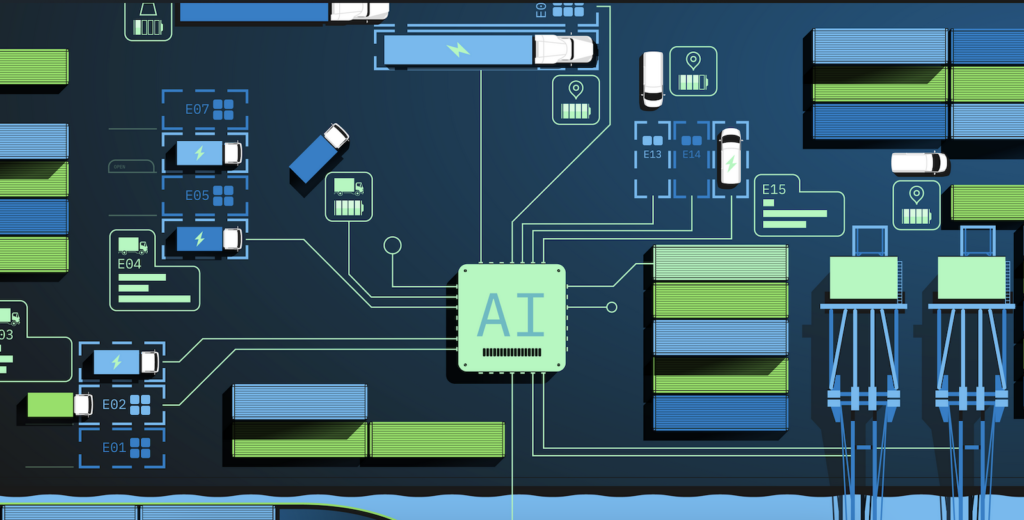
Sign up for daily news updates from CleanTechnica on email. Or follow us on Google News!
Last week, CleanTechnica recapped some of the latest developments in wireless EV charging, featuring the Pennsylvania-based firm InductEV. Our readers had many comments and questions about wireless EV charging. The folks at InductEV read them all and kindly offered their additional insights in a detailed email. Here they are, edited to save space and avoid repetition. I’ve also trimmed the comments down and omitted some that were redundant.
Is Dynamic Wireless EV Charging The Most Effective Use Of Available Resources?
Our first commenter noted that last week’s article neglected to mention the potential for wireless EV charging to help accelerate the uptake of V2X-enabled electric vehicles. They also endorsed the idea of placing multiple, stationary wireless chargers along a route, rather than installing dynamic or en-route charging systems in which an EV can charge while in motion.
InductEV Responds: That’s a great point re: the opportunities with V2X participation. InductEV’s system is supported by InductAI, our proprietary Energy and Charger Management software, which can optimize charging based on renewable energy availability and/or electricity rates.
Our charging hardware is also capable of connecting and providing power in <2 seconds once vehicle and ground pads are aligned, making even short stop times beneficial for vehicle range.
The Fleet Electrification Angle
The fleet electrification movement has gotten a lot of attention from CleanTechnica over the years, and InductEV also took note of that angle in the same response. “We’ve also seen that on-route wireless charging offers an alternative that addresses the points you raise about resource allocation. Instead of requiring a massive build-out of dynamic charging infrastructure or depot-based wired charging, our approach allows for optimized fleet deployment, often with fewer vehicles needed overall than a wired system,” the company explained.
“Our system enables vehicles to charge opportunistically at natural stops along their routes, effectively mirroring the continuous operation you see with diesel vehicles without the need for lengthy depot charging downtimes,” InductEV added. “By charging frequently and in smaller bursts on-route, vehicles can utilize smaller batteries, which translates directly into lower upfront costs and lighter vehicles.
“We’ve seen that our on-route charging can deliver more than a 25% improvement in Total Cost of Ownership (TCO) and ~50% in annual Operational Expenditure (OpEx) savings compared to traditional wired depot charging. Plus, the use of smaller batteries and avoiding deep discharge cycles can extend battery lifespan by as much as 2 to 8 times, significantly reducing long-term replacement and recycling costs.”
Wireless EV Charging Vs. Pantographs
Of course, wired dynamic charging is practically as old as electricity. Electric trolley cars used to ply the streets of many US cities, powered by overhead lines. Commuter railways continue to use them as well.
That brings us to our second commenter, who suggested pantographs are the answer. “Far cheaper to automate overhead pantographs at the ends of bus lines so the driver can push a button from the drivers seat to engage and disengage the charger. And far more efficient,” they wrote.
InductEV Responds: In terms of efficiency, modern wireless charging systems are actually more efficient than critics suggest. InductEV systems consistently demonstrate peak efficiency of 91% measured end-to-end—from the 480V AC grid input to the DC output at the battery, with sustained field performance of over 88% efficiency across power levels and weather conditions.
Wireless charging also comes with the benefit of no exposed or moving parts, eliminating the chance of accidental damage or vandalism, saving on expensive maintenance costs and valuable real estate that would otherwise be occupied by the large above-ground electrical equipment required of pantograph systems or standard wired chargers.
This Is Not Your Parents’ (Or Your Grandparents’) Wireless EV Charging System
Similarly, Commenter #3 and others suggested that hardware-centric EV charging systems are more economical and efficient than wireless systems. One suggested a third rail, similar to those used in subways. Other commenters echoed the sentiment, including one who stated, “I’ve been building, driving cost effective EVs 33 yrs and all that time wireless EV charging has been hyped but never succeeding.”
InductEV Responds: Modern high-power wireless charging for EVs uses advanced resonant DC-to-DC converter technology, which is fundamentally different from older inductive charging systems used in applications like cell phones.
Costs can be reduced through smaller batteries needed due to opportunity charging, extended battery lifespan (2–8x) by avoiding deep cycling, and reduced real estate costs as charging cabinets can be installed up to 100 feet away from flush mounted chargers.
This also means less maintenance, as our wireless chargers have no moving parts or obstructions.
We’re not seeing efficiency losses for higher power applications. It’s actually comparable to conventional plug-in charging: our efficiency data shows that our wireless heat generation is comparable to conventional plug-in charging, which has varying levels of efficiency from 86% to 95%. As mentioned above our end-to-end efficiency has been measured at ~90% in actual customer installations across weather conditions.
The Safety Factor, Among Other Benefits
Commenter #4 took note of some additional benefits of wireless EV charging, including safety improvements and the absence of a plug to fuss with. Theft prevention — “no more stealing charging cables” — also made their list.
InductEV Response: Absolutely. We’ve seen increased safety from hands-free operations where staff don’t need to handle charging cables or even leave the vehicle while it is charging.
For example, our system utilizes a self-resonant mechanism that generates a very narrow conical electromagnetic field, strictly localized below the vehicle. It exceeds all international standards for electromagnetic emissions, including IEEE C95.1 and ICNIRP and vehicle makers have confirmed that the fields emitted by the seat heaters far exceed those produced by the charging system.
As you’ve noted, wired charging cables and infrastructure create collision risk, which our flush mount installations eliminate. We’ve definitely seen the benefit of our technology applied to quick bus stops, which allows vehicles to charge more frequently on route, sipping electricity while in natural stop points like loading docks and bus stops (opportunity charging). This is a game changer for commercial fleets.
On-route charging also allows for optimized fleet deployment, potentially reducing fleet size by over 30% compared to depot-only charging, and can extend battery lifespan by 2–8 times, leading to significant long-term cost reductions.
Wireless charging also comes with the benefit of no exposed or moving parts, eliminating the chance of accidental damage or vandalism and saving valuable real estate that would otherwise be occupied by the large above-ground electrical equipment required of pantographs or standard wired chargers.
What The Analysts Say
The firm IMR Market Reports is among those taking a look at the current state of wireless EV charging, and they like what they see. Last week IMR released its latest report on wireless charging under the title “Wireless EV Chargers Market is Going To Boom.”
“This avoids the inconvenience of plugging cables, making charging more convenient, efficient, and applicable to a broad range of applications,” they summarize, taking note of hands-free convenience, weather resistance, safety hazard and theft avoidance, and compatibility with autonomous vehicles in addition to efficiency.
“New systems are capable of as much as 90% efficiency in energy transfer and can connect to smart grids for maximum use of power,” IMR emphasizes.
Thoughts? Drop a note in the comment thread and let us know what you’re thinking.
Image (cropped): InductEV is among the wireless EV charging innovators bringing new, high-performing chargers to the market (courtesy of InductEV).
Whether you have solar power or not, please complete our latest solar power survey.
Chip in a few dollars a month to help support independent cleantech coverage that helps to accelerate the cleantech revolution!
Have a tip for CleanTechnica? Want to advertise? Want to suggest a guest for our CleanTech Talk podcast? Contact us here.
Sign up for our daily newsletter for 15 new cleantech stories a day. Or sign up for our weekly one if daily is too frequent.
CleanTechnica uses affiliate links. See our policy here.
CleanTechnica’s Comment Policy

